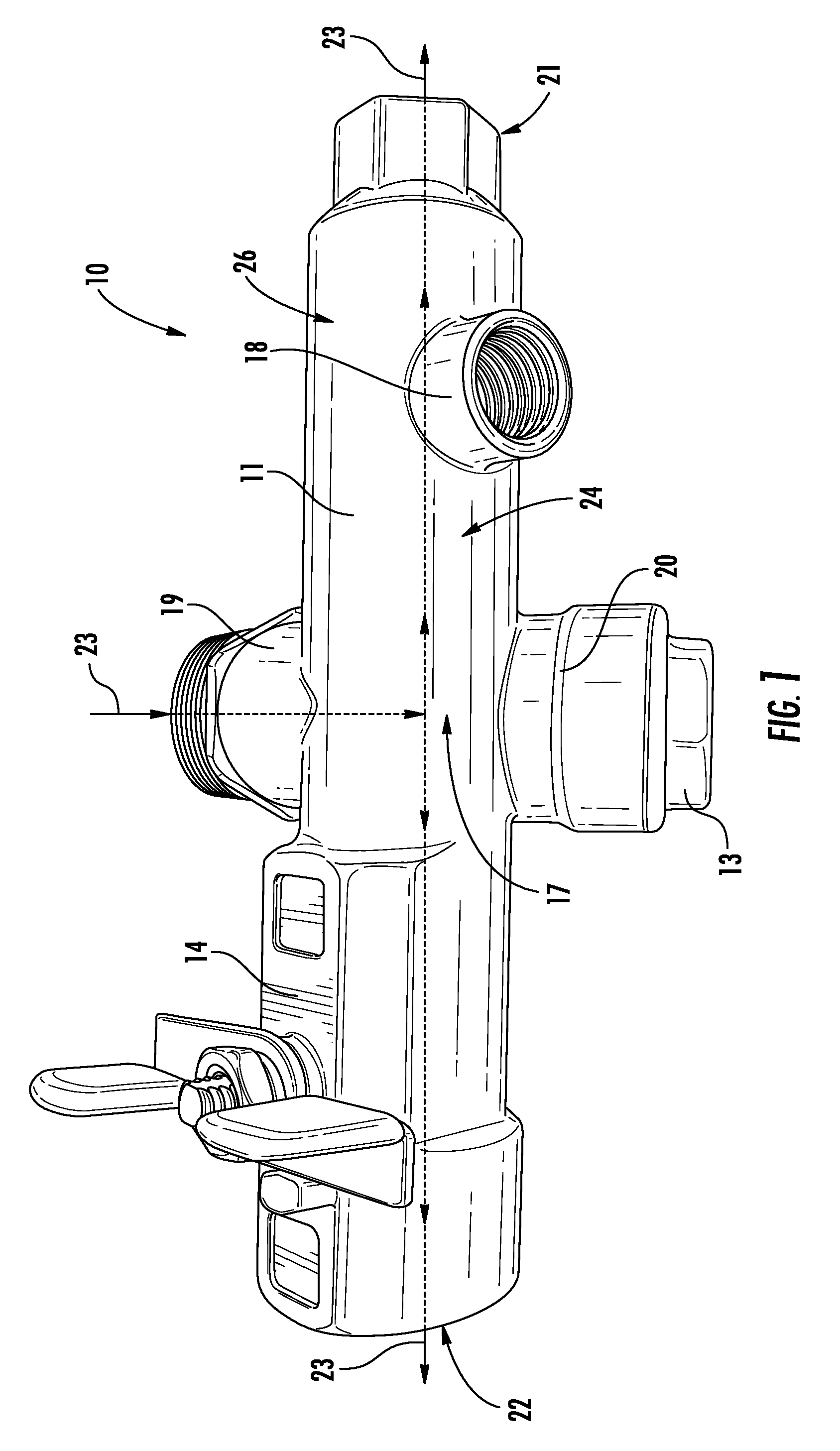Multi-port valve device with dual directional strainer
a valve device and dual-directional technology, applied in the field of valve devices, can solve the problems of clogging or damage both injection pumps, time-consuming and labor-intensive assembly of such systems, and not providing means, so as to reduce the number of threaded connection points, reduce the number of leak paths, and reduce the number of fittings
- Summary
- Abstract
- Description
- Claims
- Application Information
AI Technical Summary
Benefits of technology
Problems solved by technology
Method used
Image
Examples
Embodiment Construction
[0029]The terms “top,”“bottom,”“front,” and “rear” are used in the specification to describe the embodiments of the invention as illustrated in the accompanying Figures. It should be appreciated that in actual use, an embodiment of the invention may be rotated as needed to accomplish the objectives of the invention. As a result of such rotation, the various terms used herein of “top,”“bottom,”“front,”“rear,” and the like may not literally apply to a particular arrangement. Such terms are relative and are used herein to describe the Figures for illustration purposes only and are not intended to limit the embodiments shown to any particular orientation.
[0030]Referring now to FIGS. 1-9, exemplary embodiments of a multi-port valve device with dual directional strainer 10 in accordance with the present disclosure are illustrated. The valve device 10 is configured to fluidly connect a tank to an injection pump and to a gauge.
[0031]As illustrated in the accompanying Figures, the valve devi...
PUM
| Property | Measurement | Unit |
|---|---|---|
| thick | aaaaa | aaaaa |
| thick | aaaaa | aaaaa |
| angle | aaaaa | aaaaa |
Abstract
Description
Claims
Application Information
 Login to View More
Login to View More - R&D
- Intellectual Property
- Life Sciences
- Materials
- Tech Scout
- Unparalleled Data Quality
- Higher Quality Content
- 60% Fewer Hallucinations
Browse by: Latest US Patents, China's latest patents, Technical Efficacy Thesaurus, Application Domain, Technology Topic, Popular Technical Reports.
© 2025 PatSnap. All rights reserved.Legal|Privacy policy|Modern Slavery Act Transparency Statement|Sitemap|About US| Contact US: help@patsnap.com



